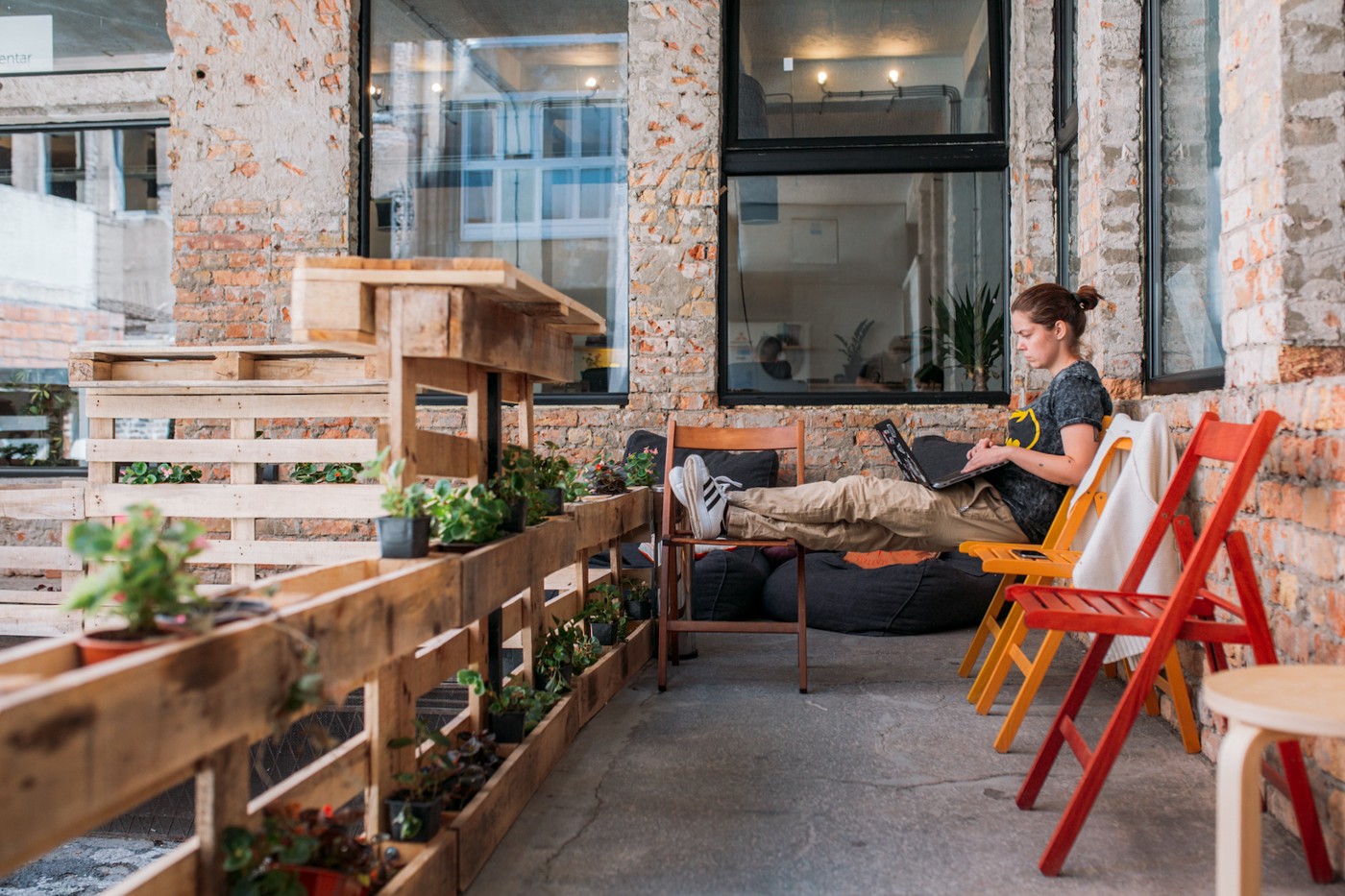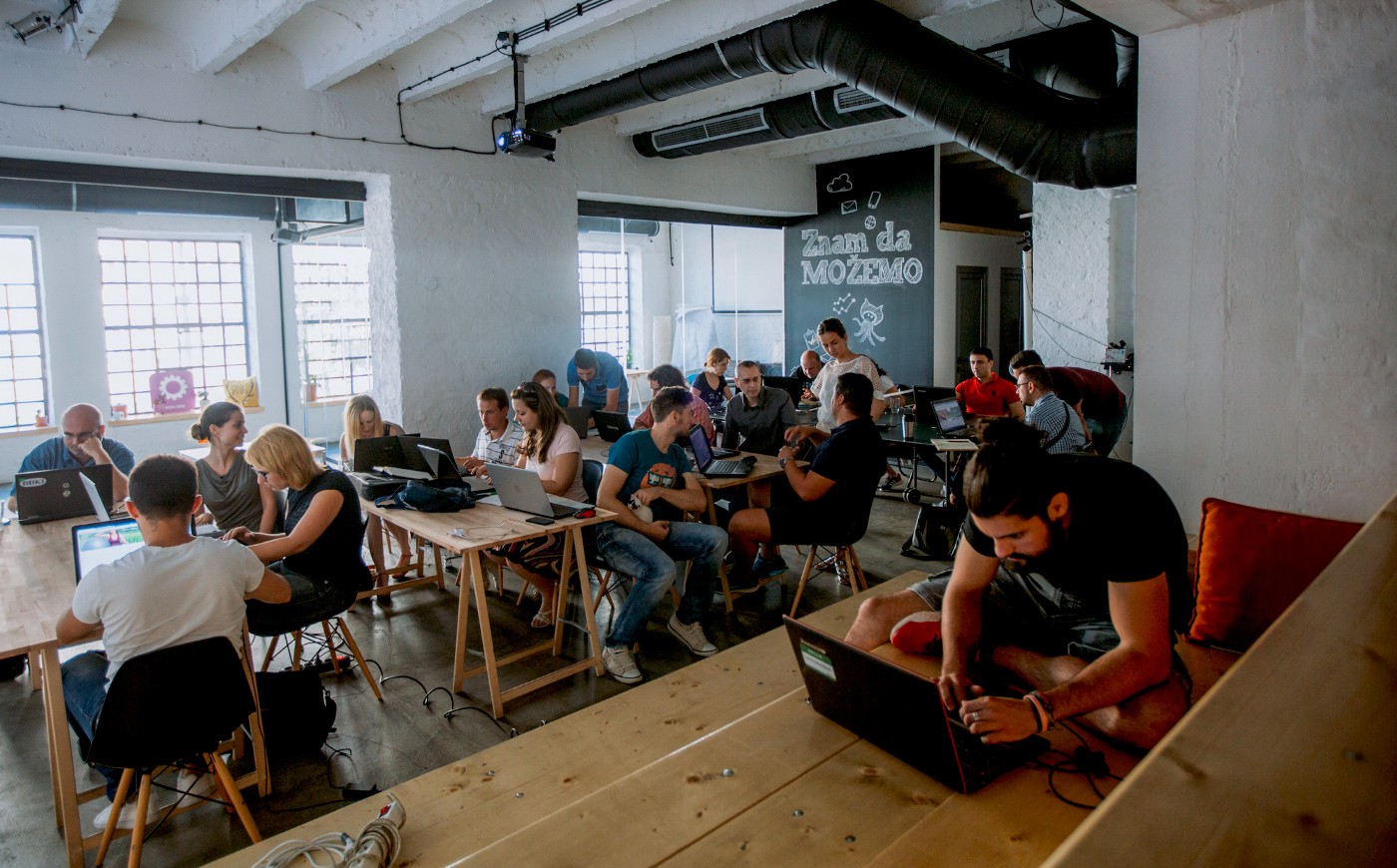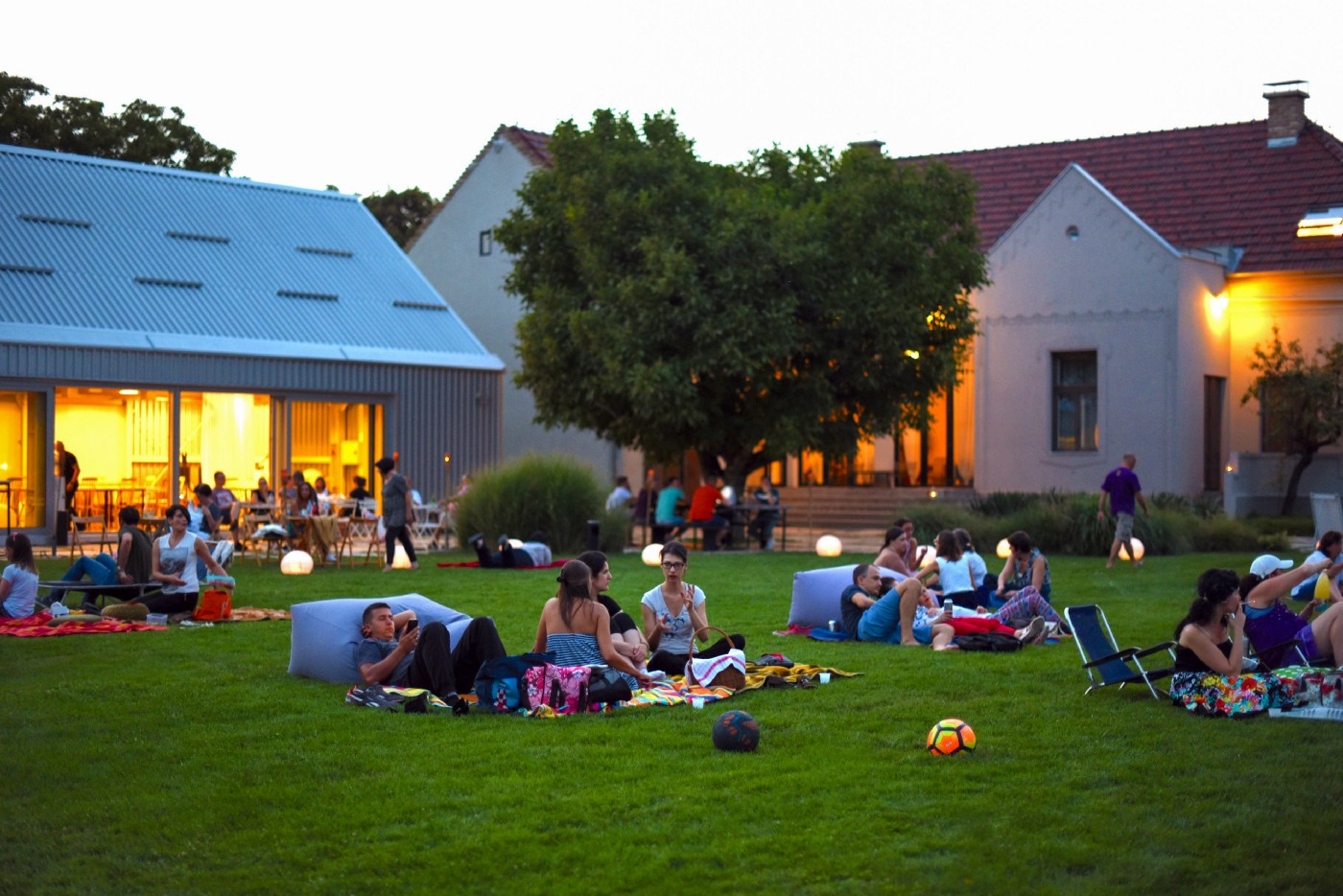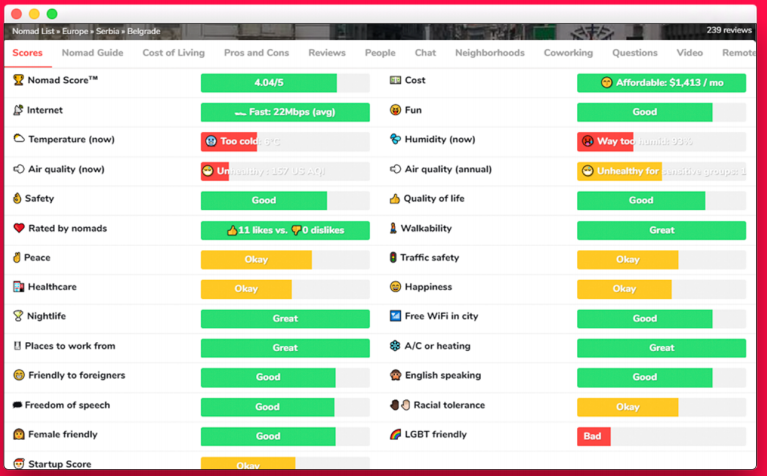Understanding digital nomads
October 19, 2020

The StartIT co-working space. One of over ten co-working spaces in Belgrade, Serbia.
Digital nomads are people who choose where they live and work, since their employment is mainly virtual, changing locations often. Their jobs cover a wide range from graphic design, digital marketing and writing, to blockchain, e-commerce, and programming.
At UNDP Serbia’s Accelerator Lab, we became interested in digital nomads because we have been working on understanding the topic of depopulation in Serbia for a while.
Depopulation is a global issue affecting a range of countries, some aspects of which are low birth rate, high emigration and no immigration. As a complex and multidimensional challenge, it can’t be addressed with a single solution.
During our research on depopulation trends, we discovered that Serbia was a country attractive to digital nomads.
The lifestyle of digital nomads is seen as reflective of current and coming trends. By seeing who they are and what they do, we wondered if we can encourage them to stay in Serbia longer. Our hypothesis was that if we can manage this , the results can be applied to other freelancers or IT professionals in Serbian diaspora to help stop brain drain.
Together with the Digital Serbia Initiative, an organization with the mission of building a strong, globally competitive digital economy in Serbia, we analyzed digital professionals from abroad who have decided to live and work in Belgrade.

The StartIT co-working spaces in Belgrade, Serbia.
First stop: The data
In the first half of 2020, the Nomad List website, one of the best-known sites for assessing destinations for digital nomads, Belgrade was ranked seventh in Europe. These trends tell us that if we attract a digital workforce, we may be able to tackle the problem of skilled emigration.
Our Digital Nomad Scanner looked at foreign digital workers in Belgrade, and what their “user journey” is. Who are they, and why do they prefer this lifestyle? What are the most important factors in choosing a place for temporarily living and working?
Based on our survey, the average digital nomad who visits Serbia is a 34-year old man from North America, travelling alone. They are entrepreneurs in IT who know about Serbia from personal connections.
We found they consider a dependable internet connection and low living expenses, as well as culture, climate, the state of civil liberties, transportation, language, air quality and how long it takes to reach the beaches or mountains.
Belgrade is attractive to outsiders
Belgrade as “Europe outside of the EU” is particularly attractive because it has the vibe of a world-class metropolis, while being one of the cheapest and most accessible European capitals.
As for working, there are more than ten co-working spaces, and many work-friendly bars and cafes. These “working infrastructure” elements are crucial for location-independent digital professionals.
There is external recognition of the booming tech scene and startup ecosystem, with more and more major global startup companies emerging from Serbia. Per Startup Genome assessment, the Belgrade and Novi Sad ecosystems are seeing particularly noteworthy success in gaming and blockchain technology. BBC ranked Belgrade as one of the most creative cities in the world, and the Lonely Planet called it “outspoken, adventurous, proud and audacious.”
Our findings showed that reasons why some destinations are more attractive for digital nomads correlate to a great extent with why they are more attractive for tourists. Our city has a reputation of attractive and versatile entertainment and lifestyle options, so it can offer a vibrant nightlife.

The co-working and co-living space Mokrin House in the north of Serbia offers opportunities to connect and work.
Belgrade has good connectivity
From the perspective of digital nomads, Belgrade is good place to be, because it is well connected both digitally and physically.
Serbia ranks 65th in the world in terms of internet speed, according to the latest research by Cable.co.uk, which tested broadband internet speed in 221 countries for a year.
Serbia is at the crossroads of Central and Southeast Europe, and while our interviews didn’t touch on this, it’s proximity to other European countries and low visa requirements probably also contribute to its attractiveness. It’s out of the Schengen zone, so those without a Schengen visa often come to Serbia to meet the requirement of not staying longer than 90 days.
It is easy to move around town on foot and the city is equipped with a variety of open, outdoor places to spend free time and meet new people. There is a low language barrier, as many people in Belgrade speak good English,.
We may need to address some shortcomings
However, there are areas that fare less well. Digital nomads dislike cold autumns and winters, smoking allowed in closed spaces, which is especially an issue in the cold seasons, rather poor air quality, and the lack of LGBTI-friendliness throughout the whole country.

Belgrade’s rankings and scores on the Nomad List website.
Our research also shows that digital nomads stay in Belgrade longer than they do in Barcelona or London, but fewer of them overall come to our capital in the first place. This means we need to do a better job of promoting Belgrade. One idea could be having local IT organizations involve digital nomads in their events. Developing policies aimed at creating a more favourable environment for foreigners who come to work in Serbia is another must.
Positioning Belgrade as a city that understands the needs of digital nomads would infuse much-needed skills. Digital nomads bring with them new knowledge and experiences, thus enriching the technological scene and giving it an international character. From this, new opportunities would open up, improving the reputation of our capital city.
International acquaintances become potential business contacts, domestic firms learn how to work with foreigners, and foreigners may decide to open firms in Serbia. This dynamic group of people can also push our society towards openness and diversity, which is what tends to make a city more attractive for others, especially to keep local citizens from leaving.
Online sources say that Belgrade was expected to be one of the most popular nomad destinations in 2020. However, the COVID-19 pandemic has taken its toll and it is now hard to make any predictions on how the crisis will affect digital nomads. But if we work on making the city more attractive, we can create a more inviting environment for everyone. Making Belgrade, and Serbia as a whole, a good place to live, work, and invest in will encourage locals to stop emigrating, and Serbia’s large diaspora to return.

Morkin House co-working space in Belgrade, Serbia
All the data gathered in the course of this research were analyzed by the Digital Serbia Initiative, with the support of UNDP, and can be found in the Digital Nomad Scanner.

 Locations
Locations


